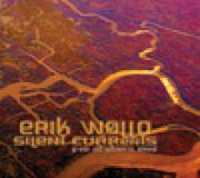Description
- Philosophical Robots [Merz / Schmoelling] [8:28]
- Against The Courtiers [Ader / Schmoelling] [5:45]
- House Of Mirrors [Behrens / Schmoelling] [6:08]
- Outer Limit [Ringlage / Schmoelling] [8:11]
- Spun Sugar [J. Froese / Schmoelling] [9:13]
- Escape Plan [Ader / Schmoelling] [5:59]
- Swordplay [Waters / Schmoelling] [8:34]
- Reflections [Merz / Schmoelling] [5:47]
- Old Days [Behrens / Schmoelling] [5:44]
New music by Johannes with Guest musicians





Sylvain Lupari –
The calling card, 20, had enough to arouse the curiosity of thousands of fans of Johannes Schmoelling and his time with Tangerine Dream. And unlike his E.P., 21 is more an overview of Johannes’ mythical solo career with nice flashes on his moments with the Dream. Spread over 9 tracks linked to 6 collaborations for a total of 64 minutes of music conceived in the intimacy of the artistic relationships between him and Andreas Merz, Kurt Ader, Jonas Behrens who all co-wrote 2 tracks, while Lambert Ringlage, Jerome Froese and Robert Waters are only present for one track each. With 6 guest artists, 21’s musical highways could only offer greater rhythmic diversity and harmonic visions in so many arrangements.
I can hear a cat meowing! It’s a soft introduction, a la Pink Floyd kind of Wish you were Here, that makes Philosophical Robots soar in the spheres of progressive music. A nice 2 minutes of atmosphere before the sequencer starts to run fast er than the rhythm of the bass-sequences. Yes, it stumbles! And makes a Chris Franke-like dribble heard in more than one place. The rhythm is purely electronic and flirts with a few options to return to its base and the haze of orchestral arrangements. If the rhythm charms, the melody screws us to our headphones. Divided in two entities in a pattern that makes very JS, it is first sculpted by a keyboard and taken back by the synth that whistles it in order to push it well in the ears. It’s besides after this whistling that the title plunges in its atmospheric phase to become again like at its origin. Finally, the 3rd change of direction brings it even further on the artistic level. It was the first time I heard a track co-written with Andreas Merz who likes to experiment with more jazz structures. Reflections is the other track and it’s a damn good one! The opening is dapper with a stop-n-go structure from which escapes the candid melody of an arpeggio line. The track is in constan t mutation and takes unexpected directions while keeping a perfect balance between its curt, and sometimes brutal, rhythm and the melodies that are sometimes innocent and other times arrogant. These two titles bring a wind of renewal in the concept of 20 and 21. It’s Kurt Ader’s turn to offer us two tracks that don’t necessarily pull in the same visions as on Kaleidoscope. Against the Courtiers proposes a fascinating texture of ambiences with a hoof wandering in nebulous mists. The synth multiplies evasive harmonies with Vangelis flavors that go hand in hand with the progression of a ghostly rhythm and its companion with prismatic harmonies. The second phase proposes a more fluid movement, but not for all that rhythmic, of the sequencer conceived for the bucolic harmonies of the synth. These nebulous moods are again found in Escape Plan, the other track with KA, which is a slow procession set in a futuristic context. I like the organic effect of a developing rhythm, like these piano lines sometimes sad and at other times intriguing. The track grows with its atmospheric intensity that goes no further than a movie score.
The bucolic flavors in the sharp synth solos in Against the Courtiers are also flying over the timid rhythmic evolution of House of Mirrors, composed with Jonas Behrens, which continues to increase the pace under solos with shades closer to the years of Johannes with the Dream. Solos that awaken a rhythmic sound like dozens of steps on a musical battlefield before ending in a good e-rock imagined in good arrangements. The solos, and their weeping tones, are superb on this track that deserves more than two listens??. Old Days follows very well this complicity between Schmoelling and Behrens on the level of harmonies led by a keyboard with often limpid and sometimes opalescent arpeggios with a broth of shadows. A first rhythmic euphony precedes a sustained rhythm, bouncing under a harmony of a bucolic kind blown by a synth which accumula tes its strident airs. Built on the variances of the sequencer, Old Days goes through its rhythmic phases with a sometimes-prismatic vision that always ends up weaving this link with the majesty of the synth solos that are literally the bread and butter of Old Days. We reach the core of 21 with Outer Limit, a track composed with Lambert that I was looking forward to. And I was not disappointed. After 80 seconds of an atmospheric immersion dominated by synth effects, mechanical bat calls and lulled by a melancholic piano, a hesitant rhythm drops its timidity to structure an ambient Berlin School. The upward movement of the sequencer swings like a timeless dangling where keyboard riffs are grafted, personifying this ghost train that knows only one station: THE END. In the meantime, waves of music envelop this rhythm in a restful haze from which the first sonic distortions and a rhythmic thread that sounds like the sequencer of the late Edgar Froese is escaping. You can also hear his g uitar roaring in this firmament that makes its percussion explode. The rhythm doesn’t even manage to whisper its existence as the synth solos fill the firmament of Outer Limit. Quite a track!
Another track I was waiting for was Spun Sugar, written with the collaboration of Jerome Froese. And here again, you won’t be disappointed. Superbly musical, the opening reminds me of the majestic melodies of Shiver me Timbers, an album that Jerome released in 2007. The structure proposes a sequencer as impatient as in Philosophical Robots and that reminds us of the spirit of 20 and 21 with harmonies and flavors of the Hyperborea years of the Dream. The bickering of the percussions and the sequencer reaches a first phase of mutation after the 4th minute where Jerome splits our ears with raging guitar solos while quietly Spun Sugar goes towards a good electronic rock to conclude in a beautiful cosmic ballad with scintillating and docile arpeggios, reminding us of that fragile emotional balan ce of Shiver me Timbers. Yes, an excellent track free of all ties that travels a lot for its 9 minutes. We have 2 intros in one with Swordplay! One cinematic and dramatic with a sharp intensity cut frankly at the 40th second. And the other, right after with an active sequencer that makes its keys run to stumble and dribble in a static rhythm structure where a bank of melody is hanging. Composed with Robert Waters, Swordplay features no less than 4 mutations over its 8+ minute runtime. If the flow of the sequencer was lively, it is more deaf in the second phase of the title which hangs on good percussions in order to support a melody just as erased but whose last syllables of the synth stick to our eardrums. The rock phase gives access to a synth that weaves good solos in a theatrical rock whose grandiloquence is attenuated with a final not still fixed on its base. Here is another track that deserves more than three listens!
It’s quite a bit harder to orient 6 musicians around 9 tracks than 3 for 4 tracks. That’s kind of my conclusion of 21 which suffers from this more heterogeneous dimension around Johannes Schmoelling’s project. Hence the importance of the selection and the order of the tracks! Because 21 flows very well with its differences in the visions of the co-writers, and between its rhythms, its ambiances and its melodies well cemented by synth solos always at the top of the art of EM. There are good moments that catch our attention instantly in this album, as there are more complex moments that require more than one listen. But the core is strong! Very strong…
2022. Sylvain Lupari